‘Smart’ RSAF airbases to use drones to detect intruders, more efficient munitions loader will be deployed
SINGAPORE: Drones will soon be used to patrol the perimeter of the Republic of Singapore Air Force's (RSAF) airbases, enhancing security while optimising manpower resources.
The drones will be programmed to help the RSAF detect intrusions and suspicious activities.
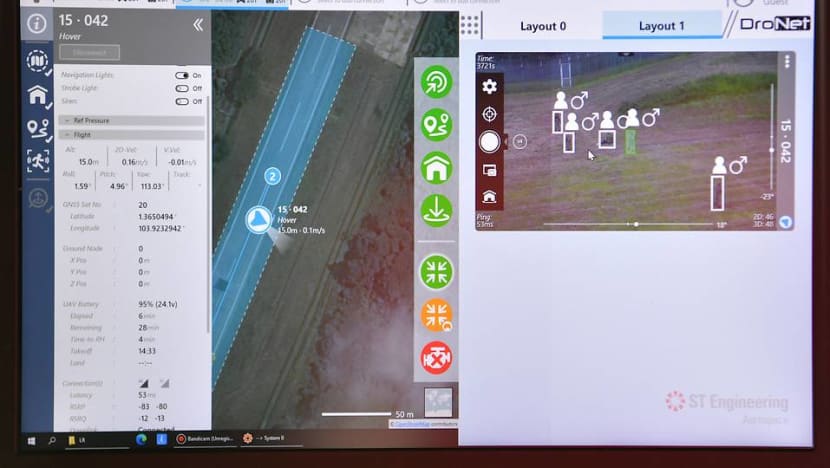
Using artificial intelligence (AI) technology, they are able to identify and track targets, as well as provide a real-time situational display through a live video feed, said the Ministry of Defence (MINDEF) on Wednesday (Jun 30).
READ: Singapore Army completes transformation to a 3rd generation force, on track for next-gen shift
While security troopers are on the way to the site of a potential intrusion, the drones will track the suspects with the help of a ground control staff member.
As multiple drones can be controlled remotely by a single person, the air force will be able to deploy fewer security troopers for inspection.
Inspection is currently done by RSAF members driving or patrolling the grounds on foot.
Future plans include fusing the drones systems with existing intruder alert systems, so that even if the drones are not around the intruder, they can still be alerted to fly to the location, said the RSAF during a media tour of Paya Lebar Air Base.
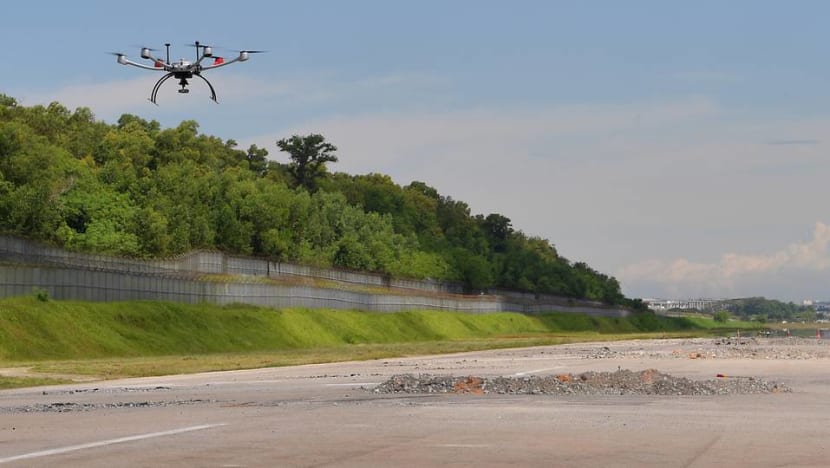
The drones are part of plans to develop smart airbases.
“Specifically, advancements in robotics, data analytics and artificial intelligence open new possibilities for the RSAF to be more agile, resilient and efficient in air power generation,” said MINDEF.
It added that airbases will be more sustainable, contributing to a reduction in carbon emissions through the use of electric vehicles and drones in base operations.
READ: SAF has achieved ‘herd immunity’ through COVID-19 vaccinations; IPPT, in-camp training resume: Ng Eng Hen
DRONES TO BETTER ASSESS RUNWAY DAMAGE
Drones will also be used to reduce the manpower and time taken to assess runway damage, while enhancing the safety of soldiers.
Instead of conducting manual checks on the runway, multiple drones can be controlled remotely to conduct the assessment quickly, efficiently and safely, said MINDEF.
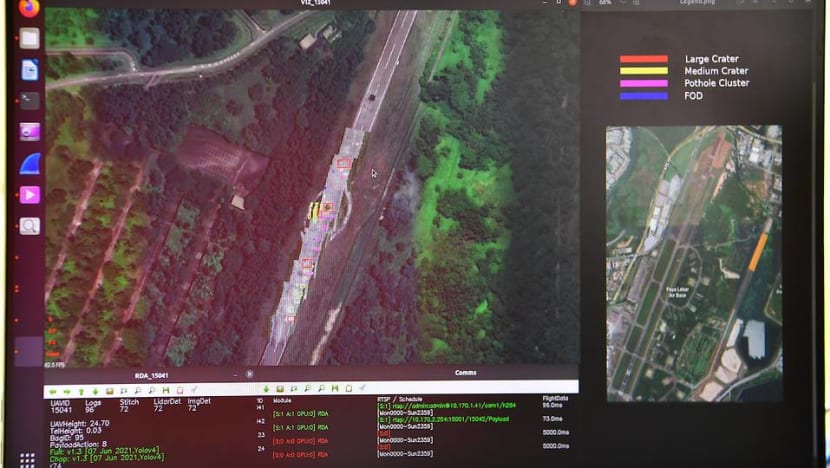
The drones can detect and classify the extent of runway damage, from small potholes to large craters, and share the data collected real-time.
Through data analytics and AI, the Decision Support Systems will then process this data, prioritise runway repair operations and provide the best solution.
In addition, the drones comprise an algorithm that allows them to coordinate their routes autonomously and reorganise themselves in case of unforeseen circumstances, like battery failure, to continue with the assigned task.
READ: Vaccinations, swab tests for SAF recruits entering basic training as part of COVID-19 measures
REDUCED MANPOWER AND TIME TO LOAD MUNITIONS
It will soon take less time to load weapons and other equipment onto RSAF’s fighter aircraft with an enhanced munitions loader.
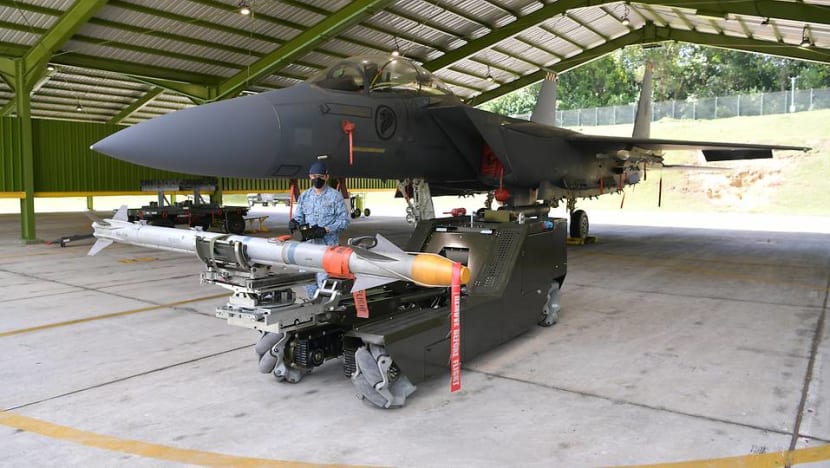
Only one person is required to operate it, compared to the current three-men loading team. It also uses data analytics and robotics to enhance its precision and efficiency in loading.
“This successfully reduced the munition loading time … effectively optimising operational efficiency of the RSAF,” said Mr Wee Qiquan, the project manager from the Defence Science and Technology Agency (DSTA).
Equipped with omni-directional Mecanum wheels, meaning the wheels can turn in any direction, the enhanced loader is highly manoeuvrable in tight spaces, such as aircraft hangars.
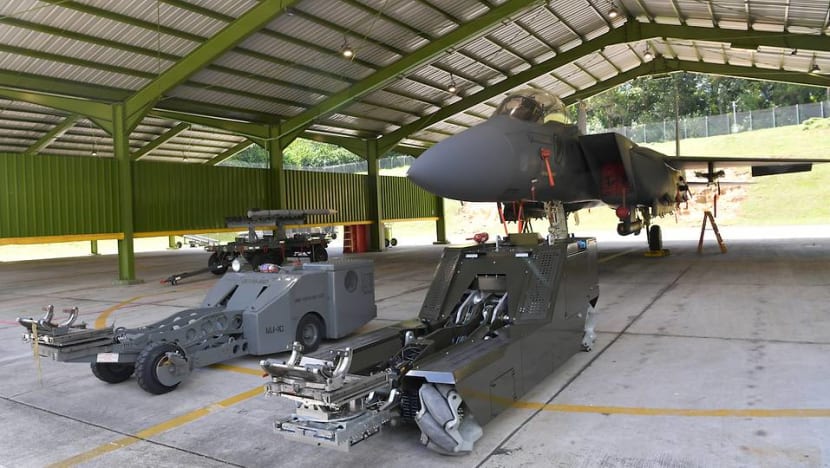
The enhanced munitions loader is also quieter than the previous version, so RSAF members do not have to wear earplugs to operate it, CNA observed during the media visit. This also means they will not need to use hand signals to communicate with each other while loading munitions.
"(This makes our job) certainly safer,” said ME2 Gopinathan Bala Chandran, a maintenance training flight instructor who loads munitions onto the aircraft daily.
“With the current loader, it's very hard for the team to communicate with one another. But with this enhanced loader, we're able to communicate better."
The enhanced munitions loader is expected to be deployed for operations this year.
AUTOMATED VEHICLES
A smart airbase will also have automated vehicles (AVs) for transportation.
With its self-driving technology, the unmanned AVs will transport logistical supplies and soldiers in the airbase, freeing up manpower to work on other tasks.
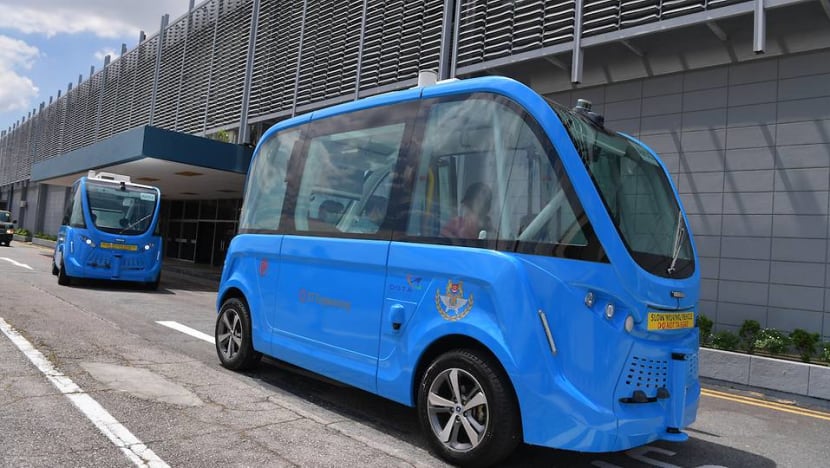
Apart from pre-programmed routes, a mobile application will be developed so users can have on-demand ferry services, akin to a ride-hailing app, to enhance efficiency in moving within the airbase.
NEXT STEPS
For the younger generation of airmen and women who might be more familiar with data analytics and AI, the smart airbase presents an opportunity for them to “train on these capabilities quite easily”, Colonel Mark Lim told reporters.
“It’s a matter of tailoring our solutions, customising our capabilities, so they can meet our operational requirements,” he said.
“For example, in the development of the munitions loader, we work closely with our defence technology partners to customise the controls, the ergonomics. Together with the user inputs, we’re able to make the training less resource intensive and more seamless to the end user.”
Ultimately, he added, such developments allow the RSAF to be more effective and resilient.
"The smart airbase is about delivering airpower in a more effective and efficient manner, providing both manpower and time savings. This translates into a more robust and resilient air force for Singapore.”












